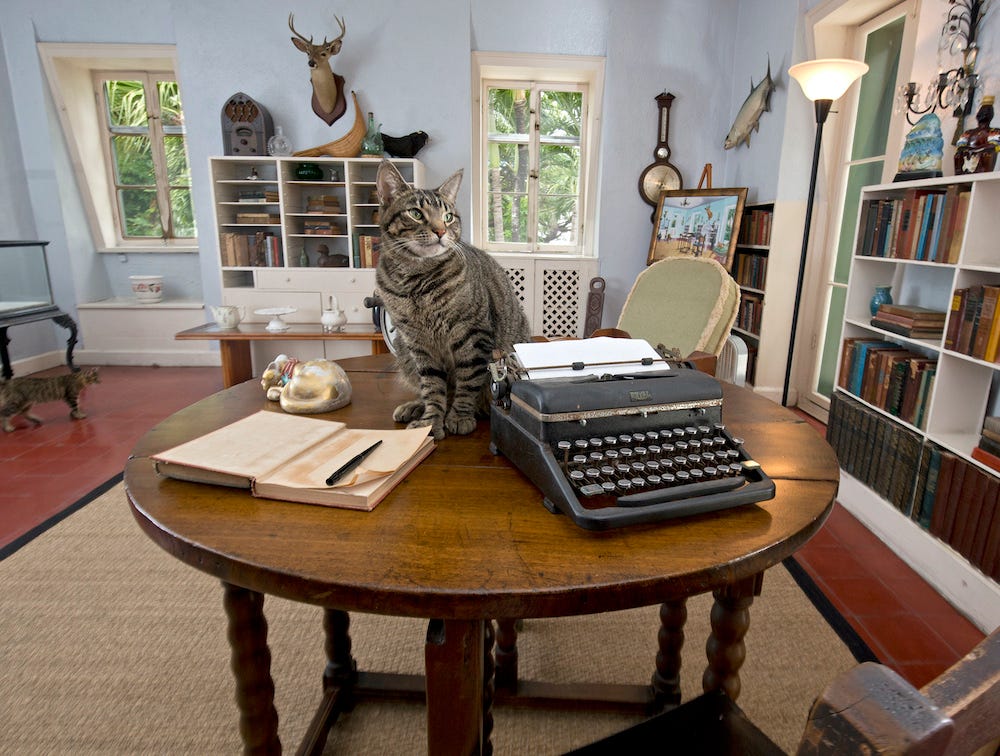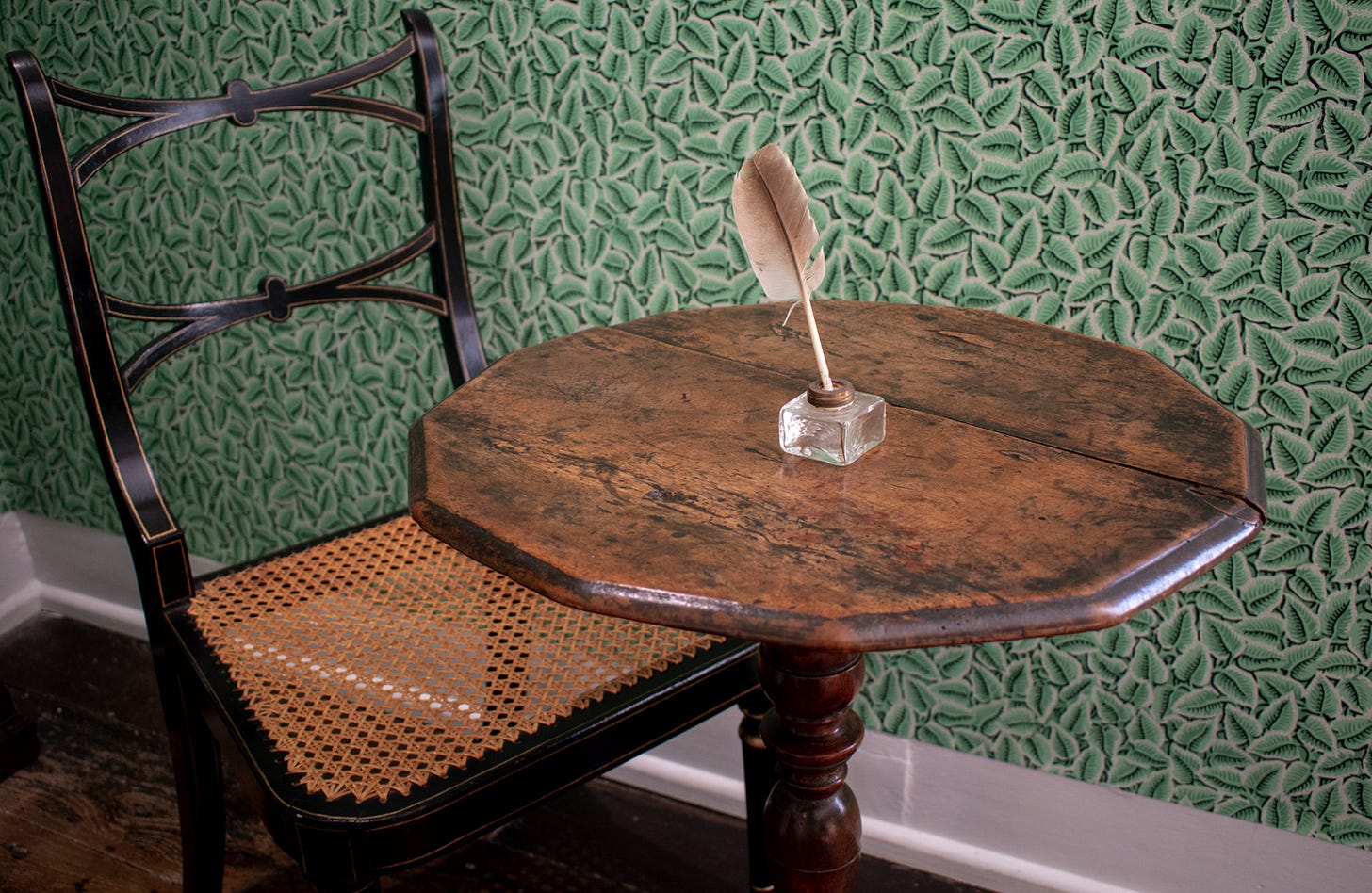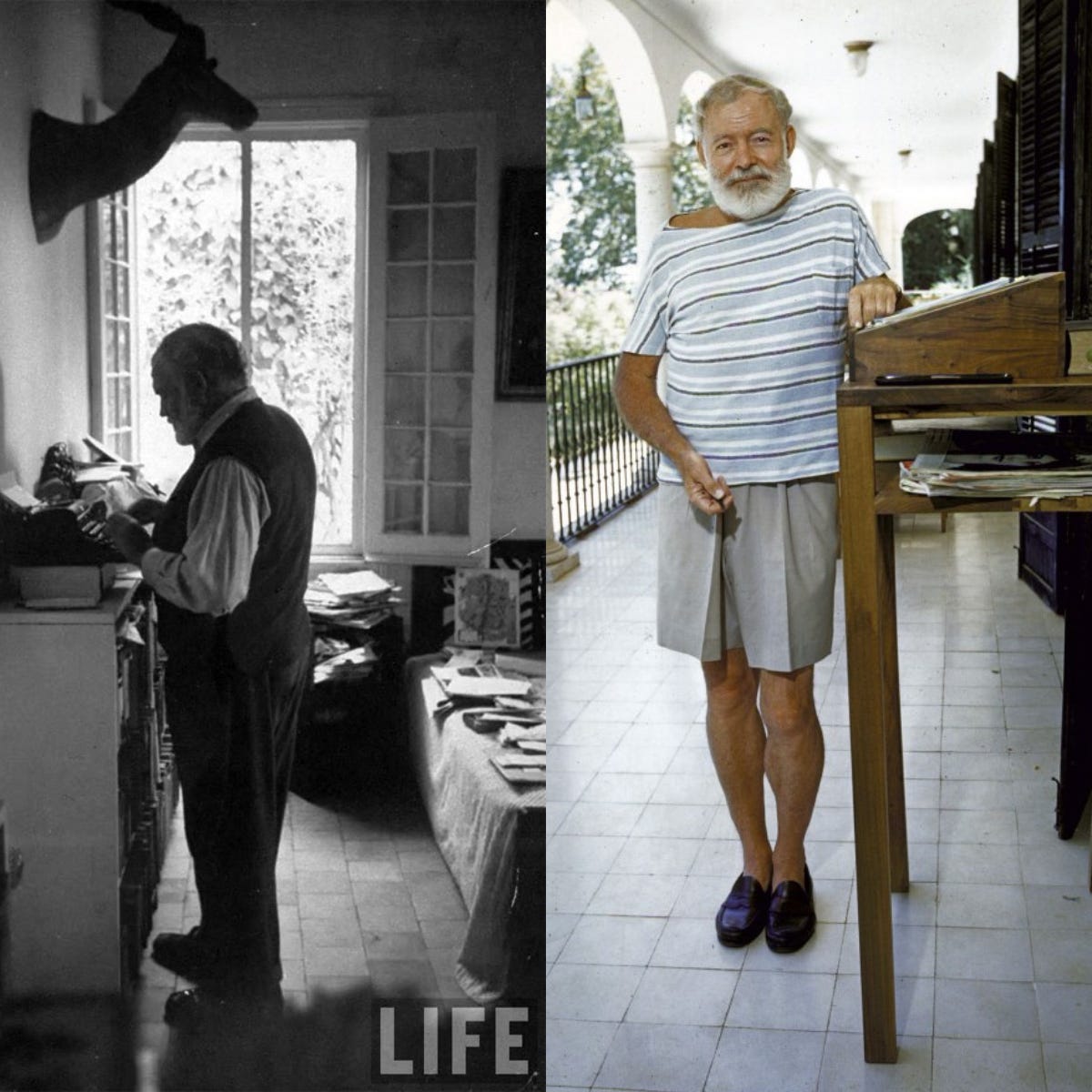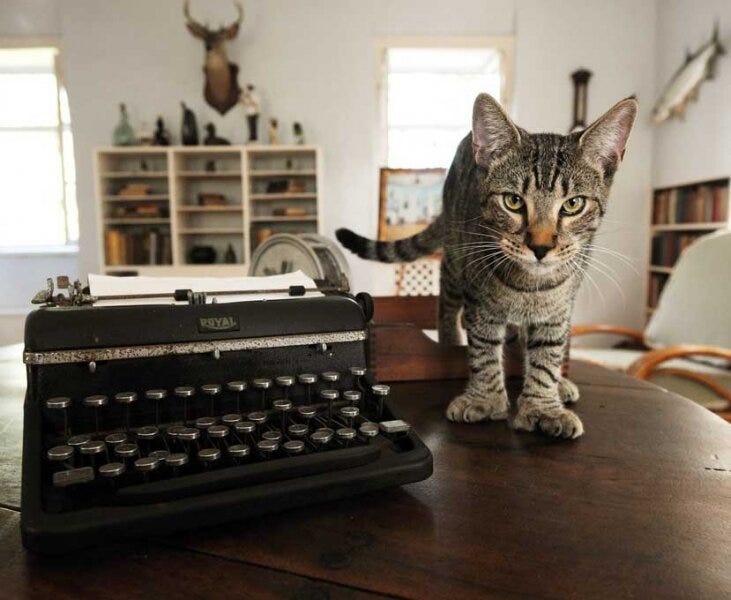The Desks of Literary Legends
Where the world’s greatest stories were brought to life...
In his memoir On Writing, Stephen King concludes the first section with a profoundly insightful observation:
It starts with this: put your desk in the corner, and every time you sit down there to write, remind yourself why it isn’t in the middle of the room. Life isn’t a support-system for art. It’s the other way around.
King flips the script on the myth of inspiration, arguing that great writing is born from daily discipline rather than from some sudden burst of genius. Art thrives because of life’s realities, not in spite of them. As Steven Pressfield reminds us in The War of Art, we must show up every day to summon the muse — the source of inspiration that rewards persistent work.
We often hold the books we love in such high esteem that their creation begins to feel almost supernatural. It’s as if the authors who wrote them were channeling some higher force, rather than navigating the same fragile, human process of doubt, relentless revision, and hope that we all know so well.
Literary masterpieces can seem otherworldly, as though they could never have been born from ordinary hands, at ordinary desks, in rooms much like our own…
Reminder: this is a teaser of our subscriber-only articles.
Beauty is truth is a reader-funded publication that relies entirely on your support. There are no ads here, just a passion for sharing beauty.
Upgrade your subscription for just a few dollars a month to help our mission and access members-only content 👇🏻
It’s precisely for that reason that I wanted to write this piece — to bring those moments of creation back down to earth. To show you the desks where the magic happened: the sometimes chaotic, sometimes minimal spaces where imagination took form. Because when you truly love a novel, there’s something thrilling about seeing the place where it came into being. As Sarah Ruhl once said:
At the end of the day, writing has very little to do with writing and much to do with life.
So here are ten desks — and, in some cases, the rooms around them — where some of literature’s greatest works were written, with the hope of inspiring your own creative ideas...
1. J.R.R. Tolkien
Given to him by his wife in 1927, this desk is where J.R.R. Tolkien wrote and illustrated The Hobbit.
In 1972, he donated this marvel to the charity Help the Aged, which sold it at auction. Today, it is on display at the Marion E. Wade Center at Wheaton College in Wheaton, Illinois.
In an accompanying letter, Tolkien wrote:
It was my first desk, and has remained the one that I chiefly used for literary work until her death in 1971. On it The Hobbit was entirely produced: written, typed and illustrated.
2. Jane Austen
The celebrated English novelist wrote at this fragile table, positioned by a window for natural light. It is a small walnut tripod table, with a top dating from the early eighteenth century.
Why Jane chose such a tiny table is unknown, but perhaps its modest size suited her quiet, discreet writing style. She was a meticulous and tidy worker, unlikely to need much space. As her nephew James Edward Austen-Leigh noted in Memoir of Jane Austen:
She was careful that her occupation should not be suspected by servants, or visitors, or any persons beyond her own family party. She wrote upon small sheets of paper which could easily be put away, or covered with a piece of blotting paper.
After Jane’s death in 1817, the table passed to a family servant, William Littleworth, and in 1913 it came into the Knight family’s possession. In 1957, it was donated to the Jane Austen Society for display at Jane Austen’s House Museum in Chawton, England.
3. Ernest Hemingway
Whether in his Cuban home, on the balcony of Bill Davis’s house near Malaga, or in the many other places he lived, Hemingway often wrote standing, finding it more natural than sitting at a desk.
In The Paris Review from 1958, George Plimpton writes:
It is on the top of one of these cluttered bookcases — the one against the wall by the east window and three feet or so from his bed — that Hemingway has his “work-desk” — a square foot of cramped area hemmed in by books on one side and on the other by a newspaper-covered heap of papers, manuscripts, and pamphlets. There is just enough space left on top of the bookcase for a typewriter, surmounted by a wooden reading-board, five or six pencils, and a chunk of copper ore to weight down papers when the wind blows in from the east window. A working habit he has had from the beginning, Hemingway stands when he writes. He stands in a pair of his oversized loafers on the worn skin of a lesser kudu — the typewriter and the reading-board chest-high opposite him.
Fun fact: Hemingway’s home in Key West, now a museum, is famous for its unusual residents: the “Hemingway cats.” Many of these cats are polydactyl, and they can often be spotted both inside and outside the house — sometimes even lounging on Ernest’s own desk.
The renowned author was given a white six-toed cat named Snow White by a ship’s captain, and some of the cats currently living on the museum grounds are descendants of that original feline…
4. Henry David Thoreau
In 1845, the legendary American writer built a small cabin on land owned by Ralph Waldo Emerson near Walden Pond. With him, he brought a simple green desk, made by a cabinetmaker who charged just one dollar for it. At this modest desk, Thoreau wrote both Walden and Civil Disobedience.
In 1847, he described his workspace in a letter to Emerson:
I sit before my green desk, in the chamber at the head of the stairs, and attend to my thinking…
5. Virginia Woolf
Keep reading with a 7-day free trial
Subscribe to Beauty is truth to keep reading this post and get 7 days of free access to the full post archives.







